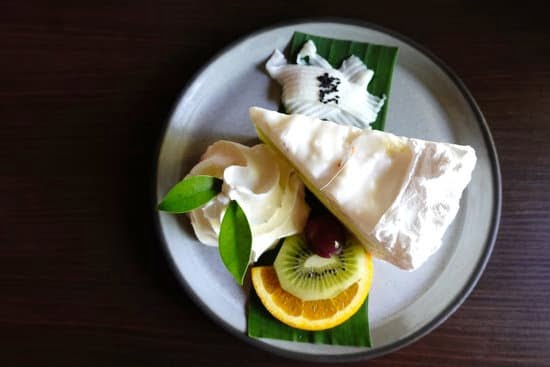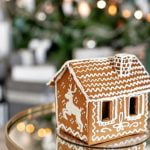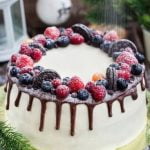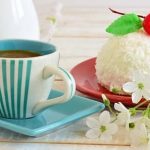Are you looking to add a beautiful and delicious touch to your homemade cakes? In this blog post, we’ll show you how to decorate a cake with icing sugar, taking you through all the essential steps and techniques to achieve a stunning result.
Decorating a cake with icing sugar not only enhances its appearance but also adds an extra layer of sweetness and creativity. Whether you’re preparing for a special occasion or simply indulging in some baking fun, mastering the art of decorating with icing sugar is sure to bring joy and satisfaction.
Firstly, we’ll discuss the best type of cake to use for decorating with icing sugar, as selecting the right base is crucial for achieving optimal results. From sponge cakes to layered cakes, each type offers its own advantages and considerations when it comes to decoration.
Then, we’ll delve into the process of preparing the icing sugar itself – from mixing and blending it to achieving the perfect consistency for decorating purposes. It’s important to have this foundation in place before moving on to the actual decorating process.
Next, we’ll explore the essential tools and equipment needed for decorating a cake with icing sugar. From piping bags and tips to offset spatulas, having these tools at hand will make your decorating process much smoother and more efficient. After that, we’ll cover basic and advanced decoration techniques using icing sugar – from simple borders and rosettes to intricate designs and dimensional embellishments.
Finally, we’ll address common issues that may arise during decoration and provide troubleshooting solutions for overcoming them. Get ready to elevate your cake-baking game as we dive into the wonderful world of decorating with icing sugar.
Selecting the Right Cake
Sponge Cake
Sponge cake is an excellent choice for decorating with icing sugar due to its light and airy texture. The soft crumb of a sponge cake makes it easy to work with when applying icing sugar, as the sugar can easily adhere to the surface without causing any damage or crumbling. Additionally, sponge cakes are typically tender and moist, making them ideal for absorbing any additional flavors or syrups that may be used in conjunction with the icing sugar.
Layered Cake
Layered cakes, such as vanilla or chocolate, are also great options for decorating with icing sugar. These types of cakes provide a sturdy base for layering different flavors and fillings while still offering a smooth surface for applying icing sugar decorations.
The firm structure of a layered cake ensures that the decorated surface remains intact and does not shift or collapse under the weight of the icing sugar. When selecting a layered cake for decoration, it’s essential to choose one that has been properly leveled and cooled to ensure an even canvas for the icing sugar.
Overall, both sponge cakes and layered cakes offer excellent foundations for creating beautifully decorated treats using icing sugar. Whichever type of cake you choose, it’s essential to handle it gently during the decorating process to avoid any damage or imperfections that may impact the final presentation. With the right cake base, you can create stunning designs and decorations using icing sugar that will impress your guests and elevate any special occasion dessert.
Preparing the Icing Sugar
Ingredients and Equipment Needed
Before you start preparing the icing sugar for decorating your cake, gather all the necessary ingredients and equipment. You will need powdered sugar (also known as confectioner’s sugar), meringue powder, water, food coloring (if desired), a mixing bowl, an electric mixer, and piping bags with various tips. Make sure that all your equipment is clean and dry before you begin.
Making Royal Icing
One of the most common types of icing sugar used for cake decorating is royal icing. To make royal icing, combine powdered sugar, meringue powder, and water in a mixing bowl. Use an electric mixer to beat the mixture on low speed until it is smooth and glossy. If you want to add color to your icing, gently fold in a few drops of food coloring until the desired shade is achieved.
Adjusting Consistency
The consistency of your icing sugar is crucial for successful cake decorating. For outlining and creating intricate designs, you will need a thicker consistency. To achieve this, add more powdered sugar to your royal icing mixture. For filling in large areas or creating a smooth finish on the cake, you will need a thinner consistency. Add small amounts of water to your royal icing mixture and mix well until you reach the desired consistency.
With these detailed instructions on how to properly prepare and make icing sugar for decorating purposes, you’ll be ready to move on to selecting the right tools for decorating your cake with beautifully piped designs and intricate patterns.
Choosing the Right Tools
When it comes to decorating a cake with icing sugar, having the right tools and equipment is essential for achieving a professional and polished look. Here are some of the essential tools you’ll need to create beautiful designs and patterns on your cake:
- Piping Bags: Piping bags are a must-have tool for decorating with icing sugar. They come in various sizes and materials, such as disposable plastic or reusable cloth. When selecting a piping bag, consider the type of design you want to create and choose a bag that will provide you with enough control and precision.
- Tips: Piping tips, also known as frosting tips, come in different shapes and sizes and are used to create various designs with icing sugar. Some common tip shapes include round, star, leaf, petal, and basketweave. It’s helpful to have a variety of tips on hand so that you can experiment with different designs and textures.
- Offset Spatulas: An offset spatula is a handy tool for smoothing and spreading icing on the cake’s surface. Its angled blade allows for easy maneuvering around the sides of the cake, ensuring an even application of icing sugar.
In addition to these essential tools, you may also want to consider using items such as stencils, cake combs, or fondant smoothers to add texture and dimension to your cake decorations. By investing in high-quality tools and equipment, you can elevate your decorating skills and achieve professional-looking results when using icing sugar.
Whether you’re a beginner or an experienced baker looking to enhance your decorating skills, having the right tools is crucial for creating stunning designs with icing sugar. Now that you know about the essential tools needed for decorating a cake with icing sugar let’s move on to discussing basic techniques for turning your creative vision into reality.
Basic Techniques
Decorating a cake with icing sugar can be a fun and creative way to add a special touch to any baked treat. Whether you’re a beginner or an experienced baker, learning some basic techniques for using icing sugar can take your cake decorating skills to the next level. In this section, we will cover some essential skills for decorating with icing sugar, including piping borders, creating rosettes, and adding simple designs and patterns to the cake.
One of the most fundamental techniques in decorating a cake with icing sugar is piping borders. This involves using a piping bag to create a border around the edge of the cake or between layers. To do this, you’ll need to select a piping tip that suits the style of border you want to create, such as a plain round tip for a classic look or a star-shaped tip for added flair.
Creating rosettes with icing sugar is another beautiful way to decorate cakes. These lovely floral designs can be made by applying pressure while piping in a circular motion, creating small swirls that resemble rose petals. Rosettes are perfect for adding an elegant and decorative touch to any cake, whether it’s for a wedding, birthday, or any other special occasion.
In addition to piping borders and rosettes, adding simple designs and patterns with icing sugar can elevate the look of your cake. Using different piping tips and techniques, you can create shapes, lines, dots, and other decorative elements that add visual interest to your cake. From polka dots and swirls to hearts and stars, the possibilities for creative design are endless when working with icing sugar.
| Technique | Description |
|---|---|
| Piping Borders | Create borders around the edge of the cake or between layers using different piping tips. |
| Creating Rosettes | Use pressure while piping in circles to create small swirls resembling rose petals for an elegant touch. |
| Adding Designs | Using various tips and techniques to create shapes, lines, dots, and other decorative elements on the cake. |
Advanced Techniques
Once you have mastered the basic icing sugar decorating techniques, you can begin to explore more advanced methods to take your cake decorating skills to the next level. Creating intricate designs using icing sugar allows for endless creativity and personalization. Using different icing consistencies also adds depth and dimension to your cake, while adding a whole new level of artistry.
To begin exploring more advanced techniques, consider using royal icing to create intricate designs on your cake. Royal icing is a smooth, hard-drying icing that works well for creating fine details and delicate decorations. To make royal icing, combine powdered sugar with meringue powder and water, then beat until stiff peaks form. Transfer the royal icing into piping bags fitted with small tips to create detailed designs such as lace patterns, delicate flowers, or ornate borders.
Additionally, experimenting with different icing consistencies can provide a visually stunning effect on your decorated cake. For example, using a thicker consistency of buttercream for piping borders and outlines can help define the edges of your design. Then, using a thinner consistency of buttercream for filling in larger areas can add variation and texture to the overall look of the cake.
Adding dimension to your cake with icing sugar is another advanced technique that can elevate the overall appearance of your creation. Consider using techniques such as ruffling the edges of piped flowers or creating three-dimensional shapes and figures from piped buttercream or royal icing. With these advanced techniques, you can truly make your cakes stand out and become works of art.
Remember that practice makes perfect when it comes to mastering these advanced techniques for decorating a cake with icing sugar. Don’t be afraid to experiment and get creative with different designs and styles until you find what works best for you.
Adding Finishing Touches
Once the main design of the cake has been completed using icing sugar, it’s time to add those special finishing touches to make the cake truly stand out. This is where you can let your creativity run wild and customize the cake to suit any occasion, whether it’s a birthday, wedding, or other special event.
One way to elevate the look of a decorated cake is by adding edible embellishments. These can include fondant flowers, sugar pearls, or edible gold leaf, all of which can be used to enhance the overall design and aesthetic appeal of the cake.
In addition to edible embellishments, dusting the decorated cake with edible glitter is another effective way to add sparkle and visual interest. Edible glitter comes in a variety of colors and can be applied strategically to highlight certain areas of the cake. It’s important to note that when using edible glitter, it should be marked as “edible” or “non-toxic,” as some forms of craft glitter are not safe for consumption.
Another crucial aspect of presenting a decorated cake is creating a polished overall appearance. This means ensuring that the surface of the cake is smooth and free from imperfections. Using an offset spatula or bench scraper can help achieve a clean and professional look when working with icing sugar decorations on cakes.
| Finishing Touches | Description |
|---|---|
| Edible Flowers | Fondant flowers or fresh blooms can be added for a pop of color and elegance. |
| Sugar Pearls | Small sugar pearls or dragees can be strategically placed for a touch of glamour. |
| Edible Glitter | Dusting with edible glitter adds shimmer and catches the eye. |
These are just a few ways to put those last magic touches on your beautiful creation.
Troubleshooting
When it comes to decorating a cake with icing sugar, there are countless possibilities to unleash your creativity and elevate the visual appeal of your baked creation. However, despite your best efforts, there may be some common issues that arise during the decorating process. This section will address these potential hiccups and provide practical solutions to ensure a successful outcome for your decorated cake.
One common issue that may arise when decorating a cake with icing sugar is the consistency of the icing itself. If the icing is too runny, it may not hold its shape when piped onto the cake, resulting in a messy and uneven appearance.
On the other hand, if the icing is too thick, it may be difficult to pipe or spread smoothly, leading to an unattractive finish. To address this issue, it’s important to carefully follow the recipe for making the icing sugar and adjust the consistency as needed by adding more powdered sugar to thicken it or a small amount of water or milk to thin it out.
Another potential issue that decorators may encounter is air bubbles in the icing sugar. When using a piping bag to decorate a cake with intricate designs or writing, air bubbles can disrupt the flow of icing and create unwanted imperfections in the design.
To solve this problem, gently tap the piping bag against a flat surface or use a toothpick to release any trapped air before piping onto the cake. Additionally, using a consistent pressure while piping and maintaining a steady hand can help prevent air bubbles from forming in the first place.
In some cases, decorators may find that their beautifully decorated cake with icing sugar starts to wilt or lose its shape over time, particularly if exposed to warm temperatures or high humidity. To prevent this from happening, consider placing your decorated cake in the refrigerator for short periods before serving to help set and firm up the icing sugar decorations. Additionally, storing the cake in a cool environment until just before serving can help preserve its overall appearance and integrity.
By being aware of these common issues and implementing these practical solutions, you can troubleshoot any unexpected challenges that may arise while decorating a cake with icing sugar. With patience and attention to detail, you can achieve a stunning final result that will impress both yourself and your guests at any special occasion or celebration.
Conclusion
In conclusion, decorating a cake with icing sugar is a creative and enjoyable way to add a personal touch to any special occasion. From selecting the right cake to preparing the icing sugar and choosing the necessary tools, this blog post has provided valuable insights into the art of cake decorating. By following the basic and advanced techniques outlined in this article, anyone can elevate their cake decorating skills and create stunning designs that will impress friends and family.
It is essential to remember that practice makes perfect when it comes to decorating a cake with icing sugar. Don’t be discouraged if your first attempt doesn’t turn out exactly as planned – troubleshooting common issues and learning from your mistakes is all part of the process. With dedication and patience, you can develop the skills needed to decorate a cake with icing sugar like a professional pastry chef.
Frequently Asked Questions
How Do You Put Icing Sugar on a Cake?
To put icing sugar on a cake, you can simply sift it over the top using a fine-mesh sieve or shaker. You can also use a spoon to sprinkle the icing sugar evenly across the surface of the cake.
How Do You Keep Icing Sugar on Top of a Cake?
Keeping icing sugar on top of a cake can be a challenge, especially if the cake is moist. One way to help it adhere is to wait until the cake has cooled completely before dusting with icing sugar.
Additionally, you can lightly brush the cake with a thin layer of melted butter or simple syrup before sprinkling on the icing sugar to help it stick.
How Do You Decorate a Cake With Powdered Sugar?
Decorating a cake with powdered sugar can be as simple as placing stencils or cut-out designs onto the cake and then dusting powdered sugar over them, creating a decorative pattern. Another option is to use cookie cutters as stencils for more intricate designs or shapes on top of the cake before dusting with powdered sugar.
Some people also use paper doilies for a lacy effect when dusting powdered sugar onto cakes.

Welcome to our cake decorating blog! My name is Destiny Flores, and I am the proud owner of a cake decorating business named Cake Karma. Our mission is to provide delicious, beautiful cakes for all occasions. We specialize in creating custom cakes that are tailored specifically to each customer’s individual needs and tastes.





